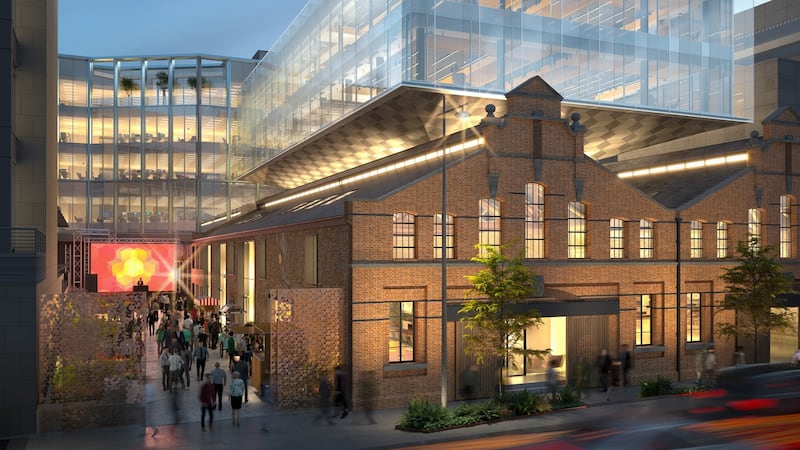At first glance, Dublin’s office market vacancy rate of 10.1 per cent at the end of the second quarter seems high at a time when demand has picked up considerably with, for example, almost a million square feet signed in the first half of the year.
One of the most pronounced consequences of the Covid-19 pandemic has been the growing occupier preference for the best available space in the market. Demand for new, sustainably certified space, particularly in core city locations, is leading activity and resulting in what we consider will be a three-to-four-tier market.
Dublin city’s office stock is well along the process of being refurbished and rebuilt over the last decade, with new space around St Stephen’s Green and the south docklands achieving the highest rents. Current occupier trends to have the best space and flagship office environments which reflect brand values, are set to take these trends to the next level of renovation within the market, with space that before 2020 was considered fit for purpose and suitable to rent arguably no longer an option.
There are only three buildings standing with more than 50,000sq ft of space available that also have LEED platinum certification. They are No 5 Dublin Landings, the Exo Building in the city’s north docklands and the Seamark Building at Elm Park in Dublin 4. These buildings can be considered the top tier, or Tier 1, buildings available in the city centre market.
Owen Doyle: World Rugby should leave the lineout alone and fix the scrum
Oscars 2025: Was Adrien Brody’s speech the longest ever, was Conan O’Brien funny and eight other key questions
Anjelica Huston: ‘There was no shame to having fun with playing women of a certain age’
‘Where I come from, people don’t do medicine. It’s not on your radar’: how a new generation of doctors is being trained

In the city’s north suburbs, 2 Dublin Airport Central is the only LEED gold building with more than 50,000sq ft of space available, while the Termini in Sandyford and F2 in Cherrywood are the only LEED gold buildings with more than 50,000sq ft of space available on the city’s southside.
Tier 2 is a space with a B energy rating — which equates to 23 per cent of the space completed and available across the whole market. Forty-two per cent of that built space is in Dublin 1, 2 and 4, but only two buildings within this tier have LEED Gold certification (1 WML in the city’s south docklands and 10 Pembroke Place in Dublin 4, which offer just under 16,000sq ft between them).
Drilling further into the detail, only 26 per cent of B-energy rated buildings have a B1 energy rating. Thirty-two per cent of B-energy rated space is in the suburban market.
Of the total space available in the Dublin office market, 44 per cent has a C energy rating or lower, putting this space in Tier 3 to 4, with 31 per cent being D-energy rated and below (Tier 4). This category of space is unlikely to achieve long leases and be attractive to tenants on a short-term basis without considerably discounted rents.
If the space available on the market with a BER energy rating of C and below is excluded, the vacancy rate is 5.2 per cent. None of this space has any sustainable certification, making it less and less attractive to investors and occupiers alike, unless they are in a position to refurbish it.
In effect the market can be split into categories that will determine more clearly investor interest, funding availability, rental levels and covenant quality. While there has always been a divide between prime and secondary office space, the focus on the detail and the components of what makes each building an attractive and viable option is set to become laser-sharp.
Joan Henry is chief economist and head of research at Knight Frank Ireland













